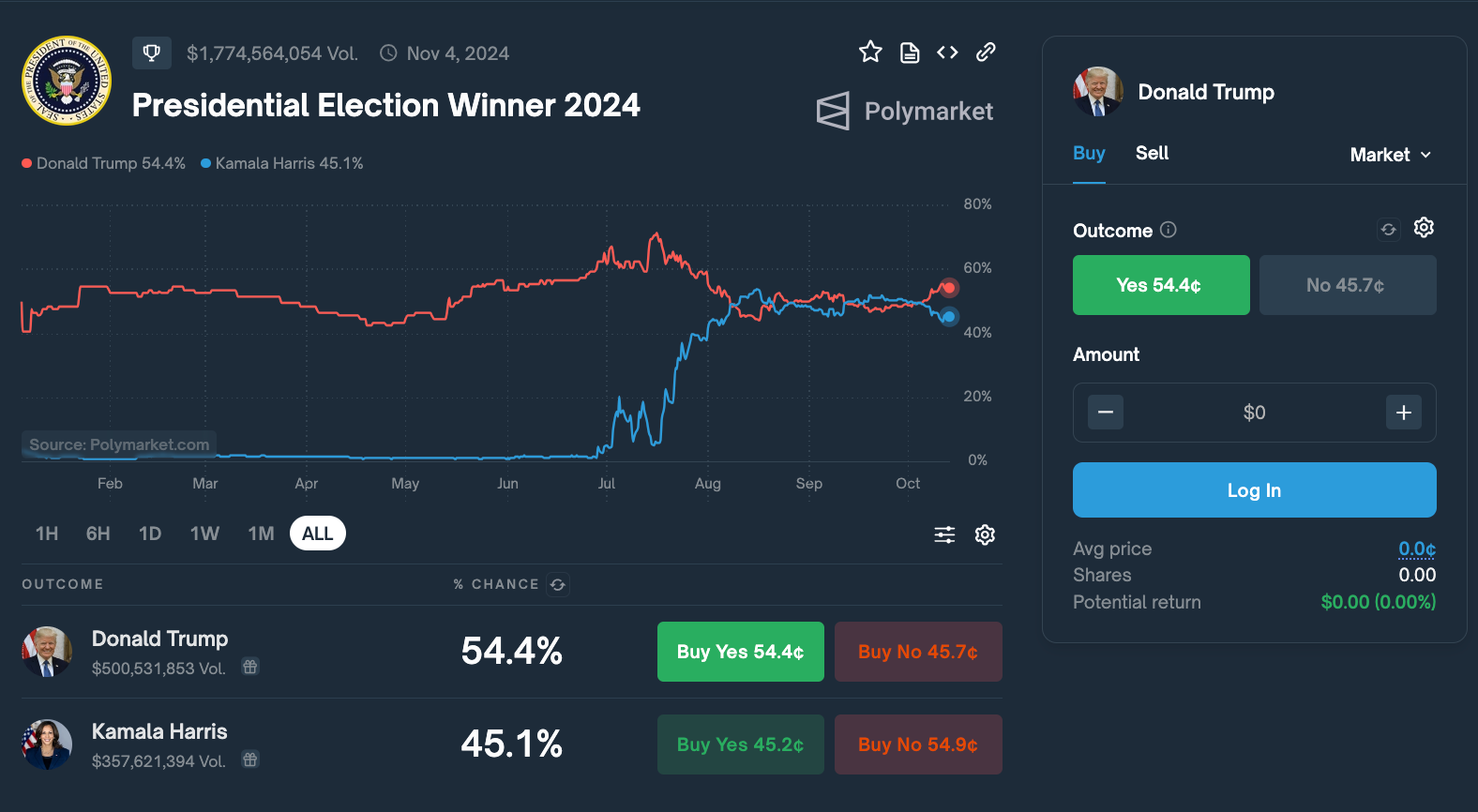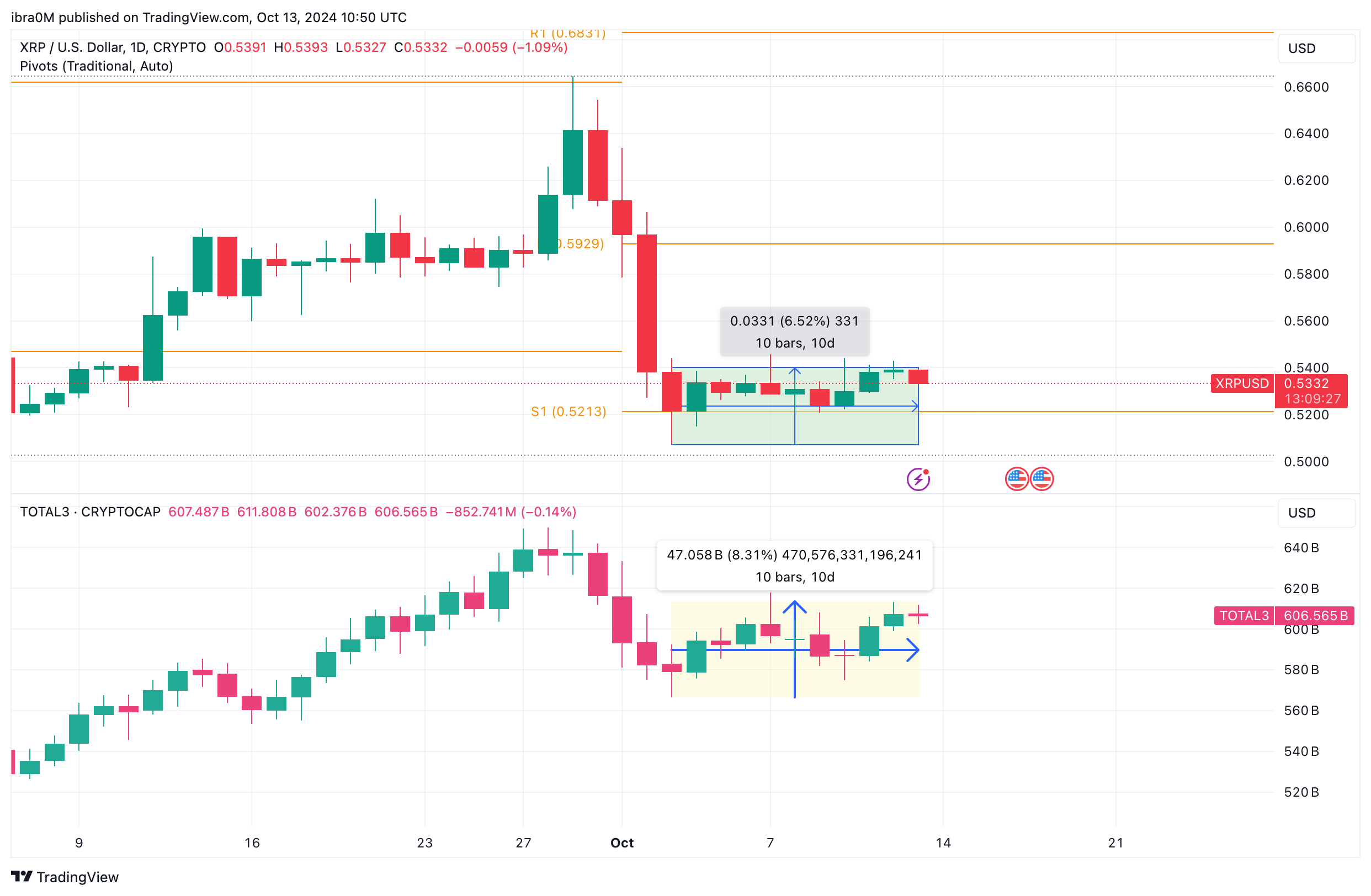Ripple’s Political Ripple Effect: A $1 Million Bet on Kamala Harris
In an unprecedented move, Ripple co-founder Chris Larsen has taken a bold stand by donating over $1 million in XRP to Kamala Harris’ presidential campaign, marking a significant milestone in the intersection between cryptocurrency and politics. This donation, made on August 18, 2024, has sparked a myriad of discussions within the cryptocurrency community, especially as the broader political landscape shifts ahead of the 2024 elections.
 The ripple effect of cryptocurrency in politics increases with the latest donations.
The ripple effect of cryptocurrency in politics increases with the latest donations.
The State of XRP and Market Dynamics
As of October 13, XRP opened trading at $0.54, exhibiting a relatively stable trajectory over the past ten days against the backdrop of a bullish cryptocurrency market. However, the atmosphere surrounding Ripple remains overshadowed by their ongoing legal battles with the SEC and the potential implications of political affiliations on market performance. While market developments largely favor a significant uptick in prices across many digital assets, XRP seems to be experiencing a lag, raising questions about its future potential.
A Gaming Gamble on Political Alignments
Larsen’s donation to the Future Forward PAC, which focuses on supporting Harris’ campaign, is notable not just for its size, but also for the strategic implications it harbors. Michael Bloomberg and Reid Hoffman, also major players in the donation game, have together helped this PAC raise over $200 million to aid Harris’ presidential aspirations. In an age where cryptocurrencies are becoming increasingly significant, this marks the first time that a substantial donation via cryptocurrency has been made to a campaign supporting a Democratic candidate in the U.S., thereby setting a precedent for future interactions amidst cryptocurrencies and politics.
The Crypto Community’s Divided Loyalties
Despite these progressive steps, the reality is that a significant portion of the cryptocurrency community still favors Donald Trump. Recent polling data shows Trump leading with 54% against Harris’s 45.1% among crypto bettors, reflecting an apparent alignment of traders with Trump’s commitment to fostering a pro-crypto regulatory environment. This stark juxtaposition highlights the complexities of political endorsements in today’s environment and suggests that while Ripple’s support for Harris may align with ideals of innovation, it could also alienate a portion of the crypto electorate.
 An election forecast indicating the current landscape of presidential candidate popularity in the crypto space.
An election forecast indicating the current landscape of presidential candidate popularity in the crypto space.
As the election season ramps up, the stakes become higher. Trump’s promise to ease regulatory pressures on the crypto sector resonates with many in the cryptocurrency community who feel unrepresented by the current administration’s stance on digital assets. On the contrary, Harris’s suggested approach towards digital innovation sparks a debate about the balance between regulation and advancement.
Legal Struggles Amid Political Contributions
Larsen’s charitable venture is timely, given Ripple’s ongoing litigation challenges with the SEC. Both parties are currently entrenched in an appeal against a ruling made earlier this year, which could have substantial implications for Ripple’s future and that of XRP. Over the past few weeks, while broader market trends saw a palpable uptick after a positive U.S. jobs report around October 3, XRP has remained within a narrow trading range between $0.52 and $0.55—a situation compounded by the uncertainty stemming from Ripple’s legal challenges.
 Current price trends for XRP showcasing notable resistance and support levels.
Current price trends for XRP showcasing notable resistance and support levels.
Having failed to capitalize on favorable market conditions, XRP must find a robust path forward, ideally free from external legal pressures. The upcoming months will be crucial as both Ripple navigates its legal uncertainties and looks to align its political support with market realities.
Conclusion: A Defining Moment for Crypto Politics
As the ripple effects of Larsen’s decision unfold, it serves as a combined statement on cryptocurrency’s expanding influence within the political arena and the potential ramifications of political affiliations on market perceptions. With the 2024 elections around the corner and a divided crypto community, the coming weeks will likely offer a myriad of developments that could reshape the narrative not only for Ripple but for the entire crypto sector. The outcome of this political alliance, coupled with regulatory clarity, will ultimately define the course of XRP and its long-term viability in an ever-evolving financial landscape.
The fusion of politics and cryptocurrency is only beginning. If Larsen’s backing of Harris can effectively lobby for favorable laws in the digital asset space, it would indeed signal a new era for cryptocurrencies—including XRP.


 Photo by
Photo by 











